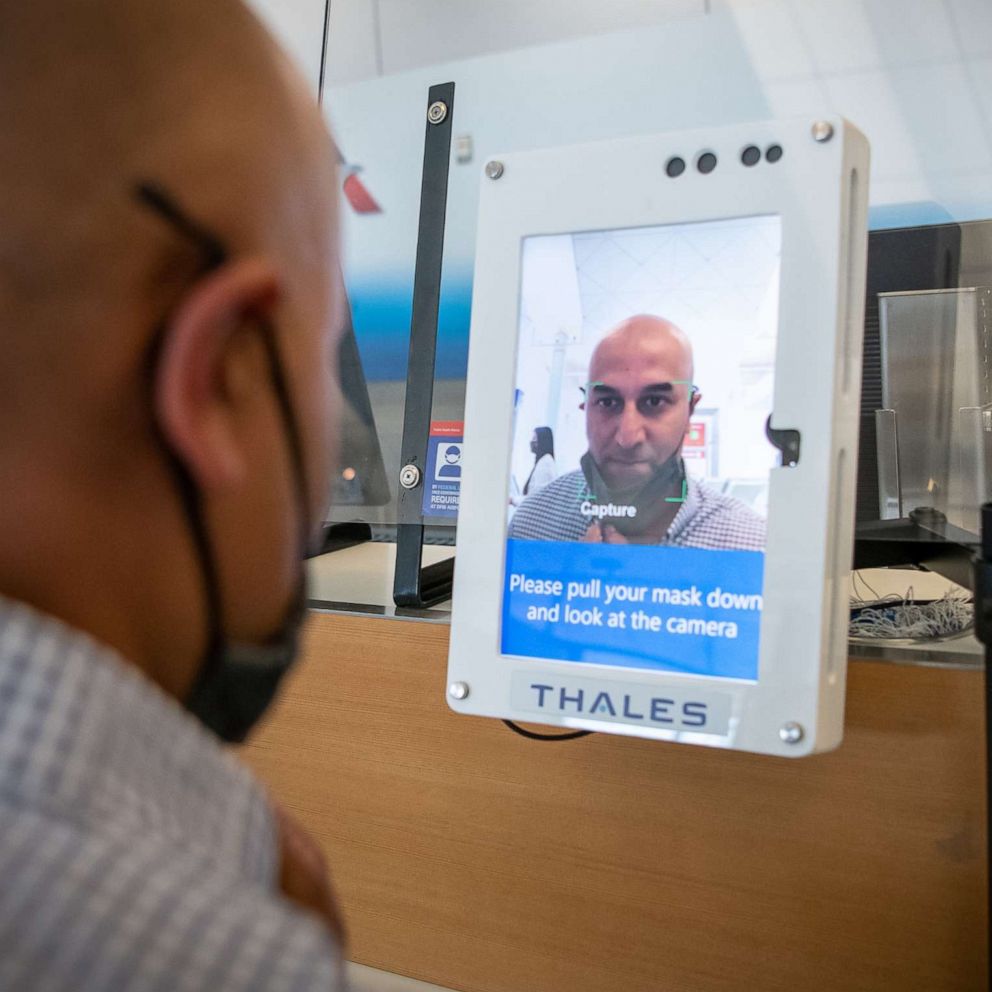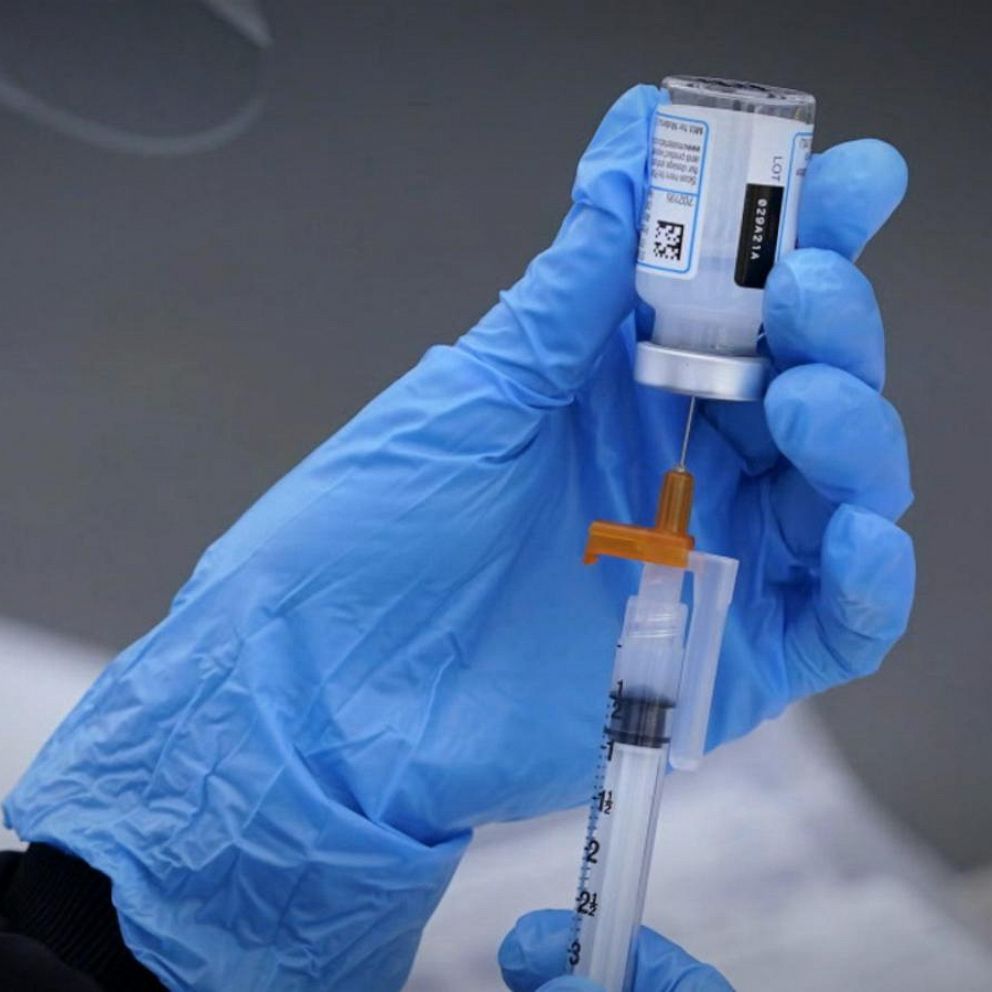How to work out safely at the gym amid coronavirus pandemic, quarantine weight gain
A medical expert shares three tips.
Fears of gaining the "quarantine 15" or "quarantine 19" at the start of the coronavirus pandemic last year have turned into reality for some Americans, according to a new study.
Adults under lockdown orders gained more than half a pound every 10 days, according to a study published Monday in JAMA (Journal of the American Medical Association) Network Open.
The study, conducted by researchers at the University of California, San Francisco (UCSF), was small and used participants' weight measurements from Bluetooth-connected smart scales.
Still it was able to show the amount of weight gain many Americans may have accumulated over the pandemic, according to ABC News chief medical correspondent Dr. Jennifer Ashton.
"You could be talking 5 to 10 pounds [of weight gain], so this is not trivial for some people, that's for sure," said Ashton, a board-certified OBGYN, who added that she's had similar reports of weight gain from her patients.
The study results have been published at a time when many gyms and boutique fitness studios across the country are reopening, and some that have remained open are starting to relax COVID-19 restrictions like face mask mandates.
COVID-19 cases in the U.S. have fallen since millions of vaccine doses started rolling out, but some areas of the country are still reporting high case rates and hospitalizations.
What the spread of COVID-19 is like in the community is one of several factors people will need to consider when deciding whether to return to an indoor gym, according to Dr. Simone Wildes, a Boston-based infectious disease specialist.
"Our positivity rate in Massachusetts is 1.75 which is really low," Wildes told "Good Morning America." "If I was 25 or 30 years old, I think I wouldn't feel as stressed going to the gym [in Massachusetts] as someone in an area where the positivity rate is more than 10%."
"It doesn't mean I let my guard down," she said. "It means the likelihood of me getting COVID [is] definitely on a lower scale, but not zero."
Another factor to consider when contemplating a return to the gym is whether or not you have been vaccinated, according to Wildes.
"Once you're fully vaccinated, then you can start to look at the landscape of returning to the gym," said Wildes, noting that being fully vaccinated means you've gotten both doses of the two-series vaccines, Moderna and Pfizer, or one dose of the Johnson and Johnson vaccine. "If you're unvaccinated, the focus for that group is different."
While unvaccinated people who are not in high-risk categories for COVID-19 may consider returning to the gym if they live somewhere with a low transmission rate and if their gym is following safety guidelines, unvaccinated people in the high-risk categories -- like adults ages 65 and over and people with underlying medical conditions -- should not yet return to indoor gyms just yet, according to Wildes.
"Being outdoors is always a safe place to do your exercise," she said. "We've been doing it for a year. Just continue to do outdoor activities."
When people do return to indoor gyms, they should not expect the same experience they had one year ago, when the pandemic hit the U.S.
"There is a large group of people who haven't received their vaccine yet, so we cannot go back to the way we were," said Wildes. "And we may never go back to the state that we were pre-COVID because there are still a lot of unknowns."
"You can't think, 'I'm going to go back to the gym and joining my aerobics class with 25 or 30 people in a small room,'" she explained.
Here are Wildes' three tips to stay safe during the coronavirus pandemic, while still fitting in exercise to keep your mind and body strong.
1. Keep your body moving to help your mind and body
The average American adult should get 150 minutes of movement per week, but that time can be broken up into smaller amounts each day or even multiple times per day, according to the U.S. Centers for Disease Control and Prevention (CDC).
Wildes pointed out that not only does exercise help stave off weight gain, but it also can play a key role in helping people with mental health issues, which has been a growing concern during the pandemic.
"The pandemic has really pointed that out clearly to all of us, that both need to work hand in hand," said Wildes. "We know that there are a lot of people with depression, and exercise helps. It's one of the ways that can help with depression."
She noted that just walking outdoors is a great option to get your body moving, especially as the weather warms in most parts of the country.
The CDC offers an online guide on how to stay physically active while following social distancing guidelines during the pandemic.
2. Check these COVID-19 safety requirements for the gym.
Before you return to the gym, make sure the facility is following safety guidelines established by the CDC.
Wildes suggests running through the below checklist of five items.
- Make sure that there's a mask mandate for the gym.
- Make sure they are cleaning the equipment before and after each use.
- Make sure there is a limit to the number of people in the gym -- we're not out of the pandemic yet.
- Make sure that they have a good ventilation system. If you go in and it's hot and stuffy, then ask, "Are the windows open? Are the doors open to get fresh air in?"
- Make sure there is signage to direct people to follow social distancing guidelines.
3. Wear a properly-fitting mask at all times inside a gym:
A face mask should be worn at all times while inside a gym, even while lifting weights or on a treadmill or another cardio machine, according to Wildes.

"Think about yourself on the treadmill, you're tired and your mouth is open and you're breathing heavy," she said. "All those particles go in the air and those are the ways you can get COVID."
"If you're in an exercise class, it's the same thing," she said. "You are really working hard and you're going to be breathing harder and the harder you breathe, the more particles that come out."
As important as wearing a face mask at all times is making sure the mask fits properly, according to Wildes.
"The mask should fit snugly against the sides of your face so there are no gaps," she said, adding it should be secure enough to prevent slipping while working out. "Try not to touch your eyes, mouth or nose when removing the mask from your face and wash or sanitize your hands immediately after removal."








